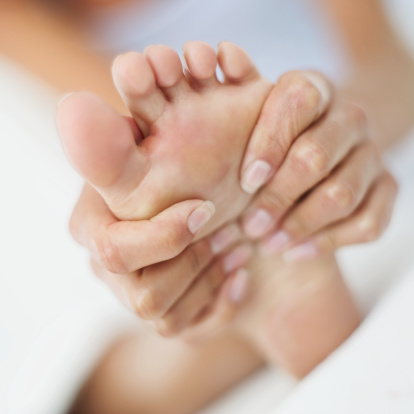 JV asks: “Is reflexology New Age?”
JV asks: “Is reflexology New Age?”
Yes, reflexology can be very much associated with the New Age, but because there is no universal definition of the practice, a person needs to research individual practitioners to determine exactly what they’re providing.
For example, according to the scientific community, “Reflexology works in a similar way to acupressure and acupuncture. It is thought that there are certain points on the feet and hands that correspond to the organs and glands in the body,” writes Cancer Research UK. “So by pressing and massaging these points it can stimulate energy pathways in the body. If any energy pathways are blocked reflexology aims to unblock them, allowing the energy to flow freely again which aims to restore balance to the body.”
The energy they are referring to is putative, meaning that it is scientifically unsubstantiated and is affiliated with the pantheistic belief in a universal life force.
However, providers such as the Reflexology Association of Canada, have their own way of describing it. “Reflexology can be used to restore and maintain the body’s natural balance and facilitate healing…Sensitive, trained hands can detect tiny deposits and imbalances and by working on these points, the Reflexology Therapist can release these blockages.” (Although they don’t use the word “energy,” imbalances and blockages are terms customarily used when referencing putative energy.)
The Reflexology Association of America presents it in much more scientific language: “Reflexology, an integrative health practice, maps a reflection of the body predominately on the feet, hands and outer ears. It uses unique manual techniques to deliver pressure to neural pathways assisting the body to function optimally.”
Reflexology supposedly dates back to ancient Egypt and China, but the modern version was introduced in 1913 by William H. Fitzgerald, an eye, ear, nose and throat specialist practicing in New England. Fitzgerald divided the body into ten vertical zones which corresponded to the fingers and toes and taught that “bioelectrical energy” flowed through these zones to reflex points in the hands and feet. When treating an injury, he found that he could apply pressure to zones corresponding to the site of the injury and relieve pain. He also used pressure points on the tongue, palate and the back of the pharynx wall.
Dr. Shelby Riley expanded on the zone theory by adding horizontal zones across the hands and feet, together with longitudinal zones. A physical therapist working with Dr. Riley, Eunice D. Ingham, further developed reflexology but concentrated more on the feet. After Ingham’s death in 1974, a relative, Dwight Byers, continued her practice and instituted what is now known as the International Institute of Reflexology.
Proponents claim that it can do everything from cleanse the body of toxins to assist in weight loss. They say it can be used to treat earaches, anemia, bedwetting, bronchitis and a host of other conditions; however, there is no scientific support for any of these assertions. The only conditions it has been found to help are relieving tension and pain, and inspiring a sense or well-being – basically what any good foot massage might do.
The main criticism of reflexology from a medical standpoint is the danger that it could be used as a substitute for necessary medical treatment. Also, since it is not recognized by law, no formal training is required. There is a lack of central regulation, accreditation and licensing in the field, as well as a lack of medical training. Training programs are relatively short in duration. Diplomas in reflexology can be attained in as little as six months.
An additional problem with practitioners of any kind of New Age “energy medicine,” including reflexology, is that many of them are often involved in other New Age healing modalities.
© All Rights Reserved, Living His Life Abundantly®/Women of Grace® http://www.womenofgrace.com
Women of Grace® has compiled a library of over 1400 articles on New Age and occult related material and has been offering them to the public for more than a decade – at no charge! If you appreciate our research, please prayerfully consider making a donation to support this vital work! Click here to donate!









